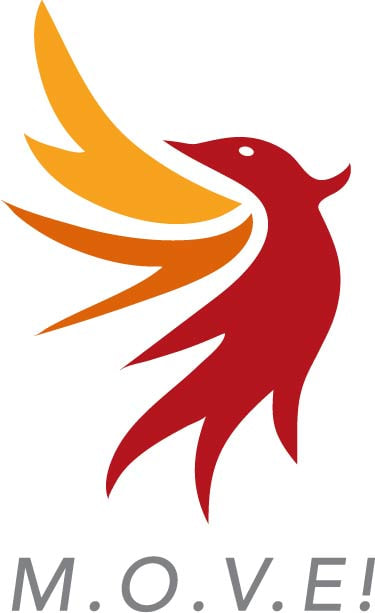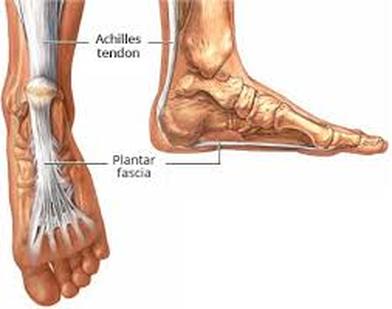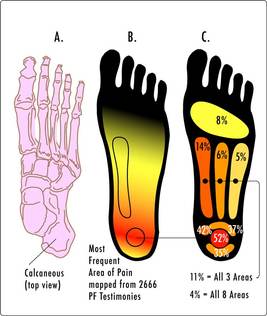Is It Plantar Fasciitis?
by Dr. Inez Kelleher
Plantar fasciitis, the most common cause of heel pain in adults in the United States, is associated with runners who overtrain, weight-bearing professions, poor footwear, decreased ankle motion, and obesity. Plantar fasciitis is caused by micro trauma and excessive strain to the plantar fascia, the stiff tissue that runs from the bottom of the heel to the base of the toes. This tissue supports the arch in the foot, particularly during toe off while walking and running.
You probably have plantar fasciitis if you have heel pain with your first steps in the morning or after sitting and resting. It can get worse throughout the day after prolonged standing.The pain will temporarily improve with rest, ice, and anti-inflammatory medicines. The good news is that 85 to 95% of those plagued with plantar fasciitis will respond well to non-surgical treatments.
If you have plantar fasciitis avoid barefoot activities and wear shoes with good support (cowboy boots work great). Plantar fascia specific stretches, foot muscle strengthening, night splints, heel cushions, and shoe inserts improve plantar fasciitis pain. Cross training to avoid excessive strain during healing is important.
For those with symptoms lasting longer than six months cortisone injections are considered. Surgery may be required for the 5 to 10% that do not get better. Some people will have x-rays which show a bone spur. This is not the cause of the pain. Anatomic studies have shown the spur is not located in the plantar fascia but it is associated with a small muscle in the foot.
You probably have plantar fasciitis if you have heel pain with your first steps in the morning or after sitting and resting. It can get worse throughout the day after prolonged standing.The pain will temporarily improve with rest, ice, and anti-inflammatory medicines. The good news is that 85 to 95% of those plagued with plantar fasciitis will respond well to non-surgical treatments.
If you have plantar fasciitis avoid barefoot activities and wear shoes with good support (cowboy boots work great). Plantar fascia specific stretches, foot muscle strengthening, night splints, heel cushions, and shoe inserts improve plantar fasciitis pain. Cross training to avoid excessive strain during healing is important.
For those with symptoms lasting longer than six months cortisone injections are considered. Surgery may be required for the 5 to 10% that do not get better. Some people will have x-rays which show a bone spur. This is not the cause of the pain. Anatomic studies have shown the spur is not located in the plantar fascia but it is associated with a small muscle in the foot.


